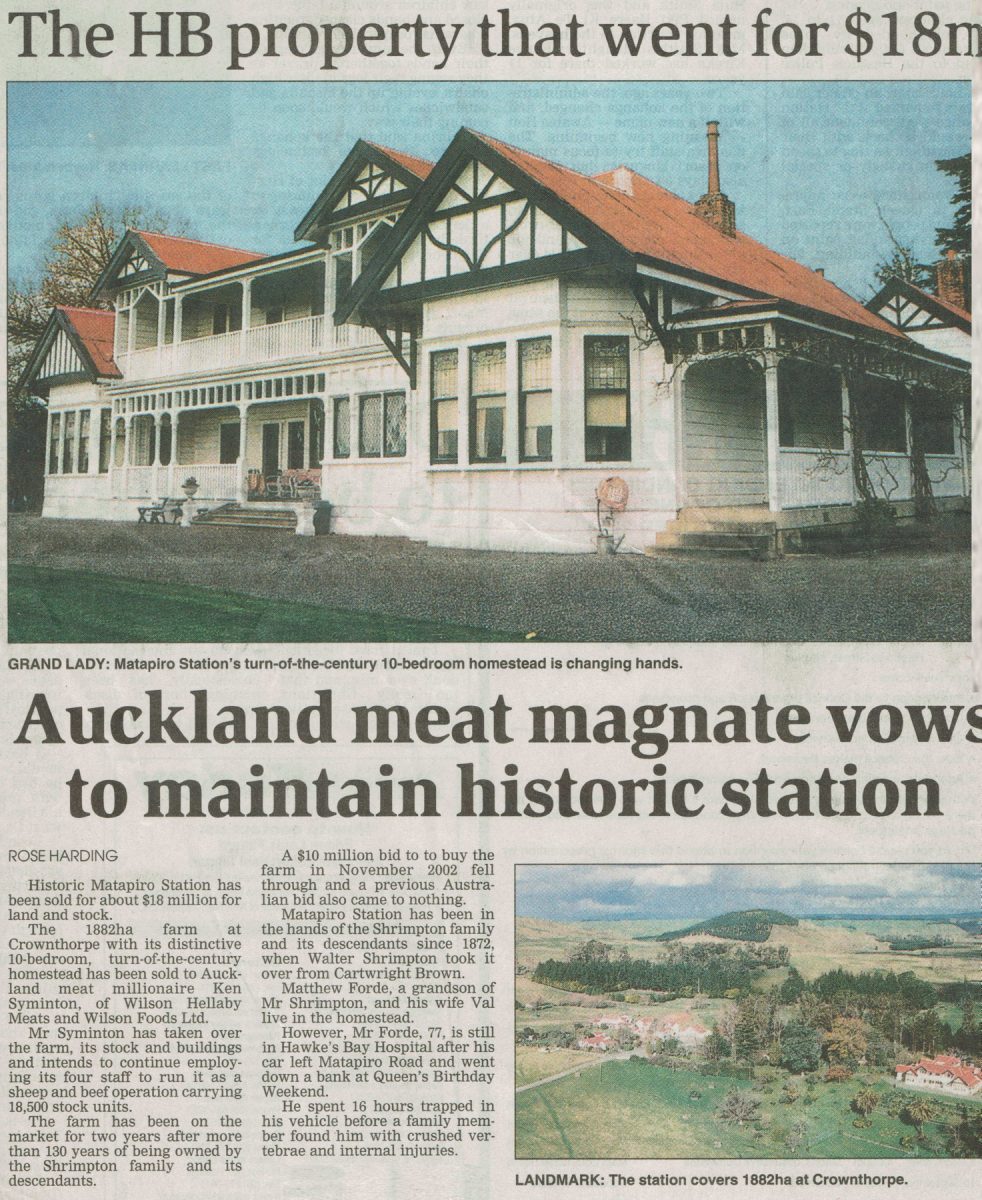He and Mrs Forde plan to move out of the homestead when he is well enough.
Mr Syminton has no plans to live at Matapiro in the short-term but said the house would be maintained. He said yesterday he was excited at the prospect of farming Matapiro.
“We don’t want Hawke’s Bay people to think we are nasty people come down from the north to change everything and sell bits of it off. We want to maintain, enhance and improve it but not change it greatly.”
He said he became interested in the station two years ago, shortly after it went on the market.
“It’s a challenge and an opportunity. We will develop plans for it as time goes by and see what do with it.”
Matapiro, a Hawke’s Bay icon, was established on a 9180-hectare block (22,700 acres) leased from the Ngati Upokoiri by Edward Tuke from 1858-64.
Mr Shrimpton had arrived in New Zealand from England in 1853. Matapiro was fern and scrub alive with wild pigs when he took it over. With his staff he created manicured pasture capable of carrying large numbers of stock.
The farm was hard hit with a plague of rabbits after World War 2 and later was one of the first in the Bay to use planes for top-dressing and weed-spraying.
Mr Shrimpton is a notable figure in Hawke’s Bay history for his public life. He represented the Okawa Riding of the Hawke’s Bay County Council for 37 years and was chairman twice.
He was a member of the Charitable Aid Board which became the Hawke’s Bay Hospital Board. When he was a member of the board he endowed Napier hospital with the Shrimpton ward named for his son Walter, who died aged six.
He presented Hastings hospital with radio equipment for patients, was on the committee of the Park Island Old People’s Home and chairman for many years, was Hawke’s Bay A and P Association president in 1887, and an office bearer in the Hawke’s Bay Jockey Club.
Since Walter Shrimpton’s death in 1936, the farm has been run by a manager for the benefit of his descendants.
The first station homestead was built in the early 1870s in the part of the farm that later became Omapere.
It was built near the Ngarururo River because it was by river that the family moved around in a time when roads were not good.
That home was later moved to its present site overlooking Matapiro Road.
Walter Shrimpton employed architect CT Natusch to enlarge the house, which he did over five years as the family grew.
A second storey was added in 1905.
The home is still very much in original condition, with rimu doors and furniture designed especially for it.
Above the stair landing is an example of art noveau [nouveau] glass fashionable at the turn of the century when it was installed.
The master bedroom upstairs is furnished in oak, with a marble fireplace and a door leading to the verandah.
A family chapel in the grounds and sunken garden complete the extensive grounds.
The land around Matapiro has increasingly been taken up for dairy farming, grape-growing and lifestyle blocks.
Valuer Greg Morice, of Napier, said the sale price was at the top end of the scale for the size of farm. However, comparisons were hard to make because of the size of the station.
He said it was “awesome” that the station sold for so much and that it was to be kept together and farmed.
Photo caption – WAITING: Matthew Forde will move from historic Matapiro Station once he has recuperated from an accident.













Do you know something about this record?
Please note we cannot verify the accuracy of any information posted by the community.